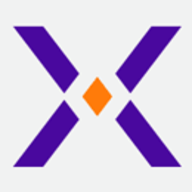

Securonix Next-Gen SIEM and CrowdStrike Falcon compete in the cybersecurity market with a focus on threat detection and endpoint security. Securonix has an advantage in SIEM capabilities due to its comprehensive threat analytics and user behavior monitoring, while CrowdStrike edges ahead in endpoint protection with its AI-driven threat intelligence.
Features: Securonix is known for its user behavior analytics, integration with cloud applications, and advanced investigative tools like Spotter. It offers customizable features such as cloud monitoring and threat models. CrowdStrike Falcon stands out for its proactive threat detection, AI-driven intelligence, and extensive endpoint visibility, essential for organizations prioritizing endpoint security.
Room for Improvement: Securonix could enhance its usability, address occasional stability issues, and simplify deployment processes. Improved integration with third-party solutions and better reporting features are also needed. CrowdStrike Falcon users suggest refining its UI for simplicity, enhancing threat correlation, and expanding third-party integration capabilities, despite its ease of management.
Ease of Deployment and Customer Service: Securonix supports on-premises and cloud environments but poses initial deployment challenges. Its customer support is frequently praised. CrowdStrike Falcon's cloud-centric design allows quick deployment, especially beneficial for remote setups. Although deployment is streamlined, UI complexity is sometimes reported, but its customer service is noted for responsiveness and expertise.
Pricing and ROI: Securonix is competitively priced, offering flexibility and positive ROI by reducing time and management resources. It's suitable for larger clients without volume-based charges. CrowdStrike Falcon is a premium solution, more costly than some competitors but justified by superior endpoint protection, offering strong ROI through improved security visibility and efficient incident reduction.
CrowdStrike Falcon saves time and offers good value for money, especially for enterprise companies, because it can stop breaches.
It's very easy to deploy without many IT admins, saving time.
The solution is time-saving, particularly in the long run after it is deployed, enabling us to get value promptly.
On a scale of one to ten, I would rate the technical support as a 10 because they resolve many issues for us.
The CrowdStrike team is very efficient; I would rate them ten out of ten.
They could improve by initiating calls for high-priority cases instead of just opening tickets.
There is no UK-based support, which leads to delays in waiting for US support.
If I raise a ticket, it initially goes to the L1 team, but the next level of escalation is really effective.
They excel in response times and quick reactions when there's an actual threat.
It has adequate coverage and is easy to deploy.
In terms of scalability, I find CrowdStrike to be stable, and I have not encountered any limitations with it.
There's no scalability limitation from CrowdStrike itself, as it just requires agent deployment.
I can rate it around eight to nine, and it is very scalable and capable of handling tasks, especially for the on-premises product.
We have not had any customers come back to say they cannot scale at the speed of their business growth.
The solution is scalable as it is cloud-based and cloud-native.
I have never seen instability in the CrowdStrike tool.
We are following N-1 versions across our environment, which is stable.
The biggest issue occurred when every computer worldwide experienced a blue screen.
The stability of Securonix Next-Gen SIEM is based on the events we are processing.
Simplifying the querying process, such as using double quote queries or directly obtaining logs based on IP addresses or usernames, would be beneficial.
Another concern is CrowdStrike's GUI. It changes annually, making it hard to work and find options.
Threat prevention should be their first priority.
At the admin level, we have many challenges where log parsing is causing issues and compatibility is not present.
The passing and setup are quite complex at the beginning, making onboarding not smooth.
SIEM could have better integration with other technologies.
It is expensive compared to SentinelOne, but as the market leader, it is worth it.
The licensing cost and setup costs are affordable.
The solution is a bit expensive.
Licensing is based on events per second (EPS), costing between $50 to $60 per EPS.
The solution is definitely not expensive.
The pricing has similar ingestion charges compared to other solutions, such as Splunk.
I can investigate by accessing the customer's host based on the RTR environment and utilize host search to know details for the past seven days, including logins, processes, file installations, malicious processes, and network connections.
The real-time analytics aspect of CrowdStrike performs well because we get all logs in real-time, with no delay, allowing us to take action immediately.
Being an EDR solution, it helps us identify attacks in real-time.
The software includes user behavior interactions, dashboards, and training capabilities.
Now, the process is automatic, reducing our workload.
The other SIEM solutions lack an option for big data analysis, whereas in the Securonix Next-Gen SIEM, we have this option.
| Product | Market Share (%) |
|---|---|
| CrowdStrike Falcon | 4.1% |
| Securonix Next-Gen SIEM | 1.1% |
| Other | 94.8% |


| Company Size | Count |
|---|---|
| Small Business | 46 |
| Midsize Enterprise | 34 |
| Large Enterprise | 61 |
| Company Size | Count |
|---|---|
| Small Business | 10 |
| Midsize Enterprise | 5 |
| Large Enterprise | 19 |
CrowdStrike Falcon offers comprehensive endpoint protection with real-time threat detection, AI-driven capabilities, and seamless integration with other platforms. Its cloud-native design provides robust security across diverse environments, making it a reliable choice for modern cybersecurity needs.
CrowdStrike Falcon is heralded for features like robust endpoint visibility, threat detection, and AI-driven capabilities. Users value its efficient real-time monitoring, which maintains low impact on performance while offering seamless integration with platforms. The lightweight design, coupled with comprehensive dashboards and automated threat responses, enhances security operations while reducing resource strain. CrowdStrike's cloud-native architecture ensures flexible, always-on protection, making it adaptable to a wide range of environments. However, improvements can be made in log management, compatibility with diverse operating systems, and integration with third-party technologies. Users also seek more robust reporting features, fewer false positives, and better support for legacy systems. Enhanced policy application, AI capabilities, and extended on-demand scanning are desired, while pricing and technical support responsiveness are concerns.
What are CrowdStrike Falcon's key features?CrowdStrike Falcon is implemented widely in industries relying on robust endpoint protection for monitoring, securing endpoints, forensic analysis, and malware detection. Its cloud-based AI capabilities ensure comprehensive security across devices, making it a preferred choice for networks, servers, and workstations globally. The efficient management of security threats and compliance with regulations is achieved with minimal resource consumption.
Securonix Next-Gen SIEM is a security information and event management solution designed to provide advanced threat detection, response, and compliance capabilities. It leverages machine learning and big data analytics to offer a comprehensive security platform for modern enterprises.
Securonix Next-Gen SIEM utilizes advanced analytics and machine learning to detect complex threats that traditional SIEM solutions might miss. Its architecture is built on Hadoop, enabling scalability and the processing of large volumes of data in real-time. This allows organizations to gain deep insights into security incidents, prioritize threats, and automate response actions. The solution also includes behavior analytics to detect insider threats and unknown attacks, integrating seamlessly with existing IT infrastructure.
What are the critical features of Securonix Next-Gen SIEM?
What is the ROI expectations?
Securonix Next-Gen SIEM is implemented across various industries, including finance, healthcare, and retail. Its flexibility and advanced analytics capabilities make it suitable for environments with complex security needs. In finance, it helps detect fraud, while in healthcare, it ensures patient data security. In retail, it protects against data breaches and payment fraud.
In summary, Securonix Next-Gen SIEM offers advanced threat detection, scalability, and integration capabilities, making it a robust solution for modern enterprises.
We monitor all Security Information and Event Management (SIEM) reviews to prevent fraudulent reviews and keep review quality high. We do not post reviews by company employees or direct competitors. We validate each review for authenticity via cross-reference with LinkedIn, and personal follow-up with the reviewer when necessary.